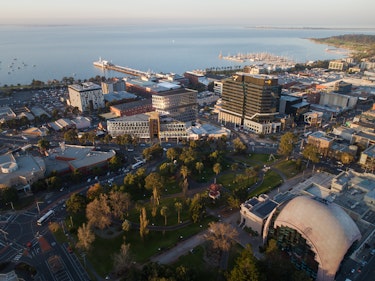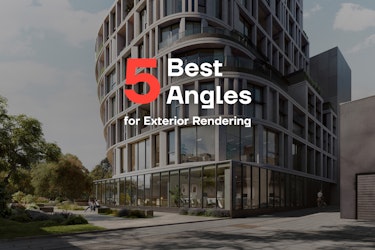One of the key elements in bringing your 3D graphics to life is the camera angles. Different perspectives have an impact on minute details, the local context, architectural highlights, and ultimately the perception of the projects. It is focused on striking a suitable balance between the prominent building features and the community.
For architects and real estate professionals, having a tonne of high-quality project pictures is essential. That is because their portfolios, social media, and presentations need to look appealing to attract a potential client's attention. But when the project is in the design or construction stage, it is impossible to take attractive images for this reason. In this situation, 3D visualization is useful. You can have as many images as you need with CGI to meet all your needs. You can purchase computer-generated images (CG) that demonstrate how your designs will seem in the future from various angles, during various times of the day, seasons, and weather conditions. Therefore, there is a lot of room for creativity. But what are the ideal perspectives for depicting architectural exteriors? What should you ask 3D artists to best bring your vision to life?
Our architectural visualization company is skilled in assisting real estate professionals and architects in maximizing external rendering. So, continue reading to learn the finest and most effective ways to present your designs.

1. Hero view (Eye-level)
This style of exterior architectural representation depicts the structure as it would appear to pedestrians. The optimum aspect for the spectator to grasp how they would perceive the building when passing by or entering it is from this perspective. This is the perspective that seems to come from nature. It might be a good idea to include people, vehicles, or other auxiliary elements in such an architectural depiction. They will give the scene more life and atmosphere. However, there is a good likelihood that a tall building won't fit entirely in the depiction at eye level. For this reason, you will probably need more renders to display the project as a whole.
We recommend to use this type of renders for residential, luxury real-estate projects and shopping areas.

2. Semi Aerial view (Elevated)
An elevated view is the next choice on our list of the ideal perspectives for external architectural depiction. It's an easy way to present the project more thoroughly because, in contrast to the eye-level perspective, it depicts the building from a bit of a distance. In particular, this perspective enables you to display more of the surroundings. This way, the viewer can see how the exterior will work with the neighbouring structures and the location in general.
This type of render can be especially useful when showing development properties or landscaping around.

3. Aerial (Bird's-eye)
Buildings are seen in aerial (sometimes called bird-view) viewpoints from both below and above. They exactly resemble photographs taken with a drone or even a helicopter. The finest method to portray a tall structure in all its glory is through this imagery. Additionally, the spectator will be able to see how it would fit in with both the immediate surroundings and the entire neighbourhood. This aspect will highlight the outside, whether the architect intended it to blend in or stick out.
It can be a time-consuming and expensive operation to create the background for 3D aerial perspectives. The use of photo montage rendering in this case is the best option. By using this method, a photoreal render of a future building or collection of buildings is smoothly merged with a real-world photograph of the surrounding area that was shot by a drone. This produces a wonderfully realistic building representation while saving time and money.
This is the best idea to show a concept of a large building, neighbor districts or a group of buildings like a residential compound or a resort.

4. Master plan view (Site plan)
The site plan is a perfect representation of the arrangement of buildings, parking, streets, landscaping and any other visual aspect of a development project. Generally, a Master plan view shows a set of housing units on an urban scale. Whether the purpose of the development is for the building to combine consistently with the surroundings or, on the contrary, to stand out, it’s always essential to demonstrate what the design will look like in its real environment.
This type of view would be a perfect tool in the hands of urban architects and as a part of city development.
.jpg?ixlib=gatsbyFP&auto=compress%2Cformat&fit=max&q=75&w=375)
5. Close-up (Vignette)
A close-up view comes in last place on our list of the ideal perspectives for external architecture depiction. Close-up perspectives have two key advantages. They start by giving more details on the materials, the design, and any selling features that might be missed in far-off views. Second, this perspective enables viewers to connect more emotionally with the project. By concentrating on the architectural features, the observer can envision oneself almost touching the outer surface and experience the space in a more personal way. Close-up images don't perform well on their own but are a terrific compliment to renderings taken from farther away.

These 5 often utilized angles for exterior architecture rendering can cover all the basics for your project. CGI is the greatest instrument for all of these tasks, whether you need to enlighten the audience on the building's design and surroundings, wow them with its majesty, or evoke their emotions by emphasising particulars.
